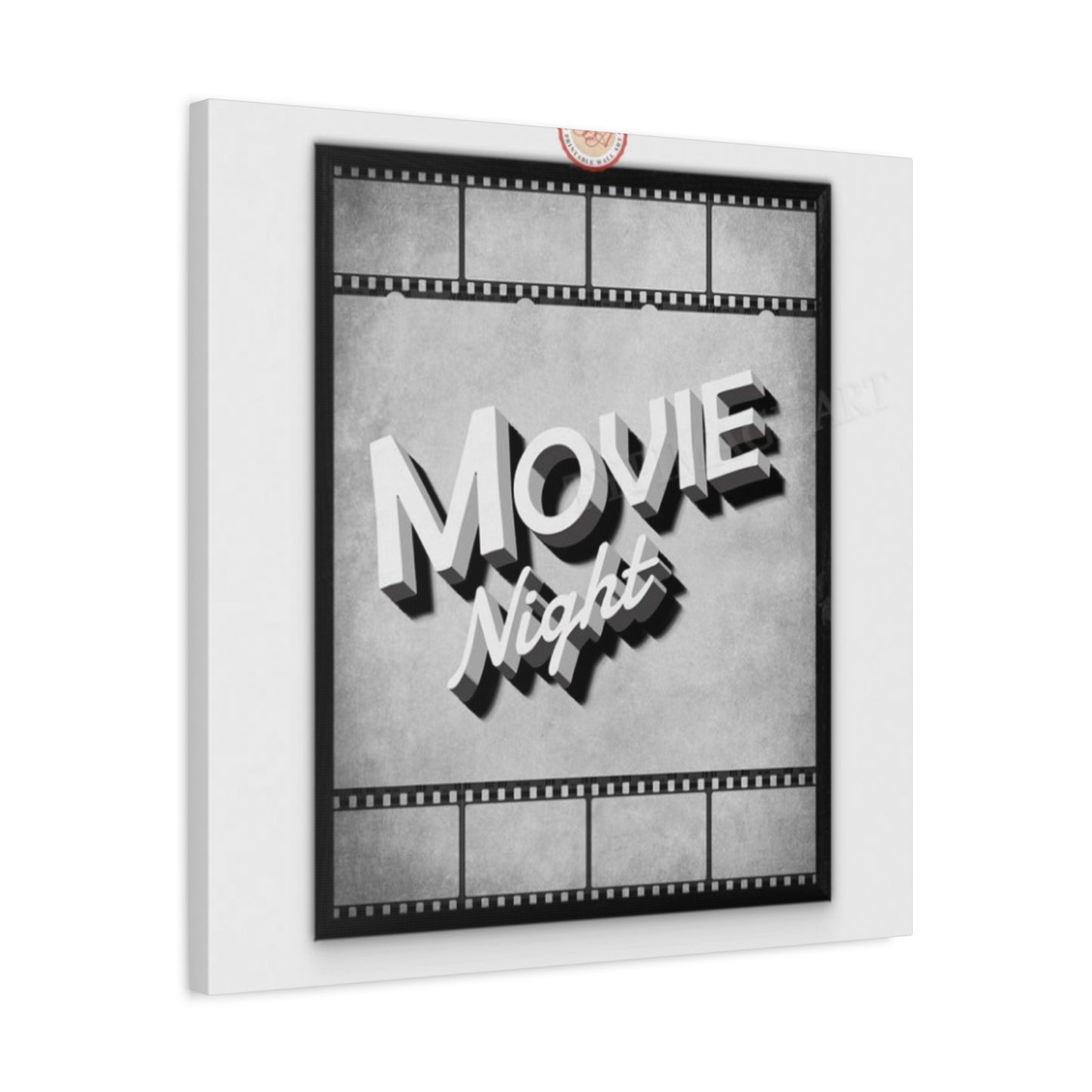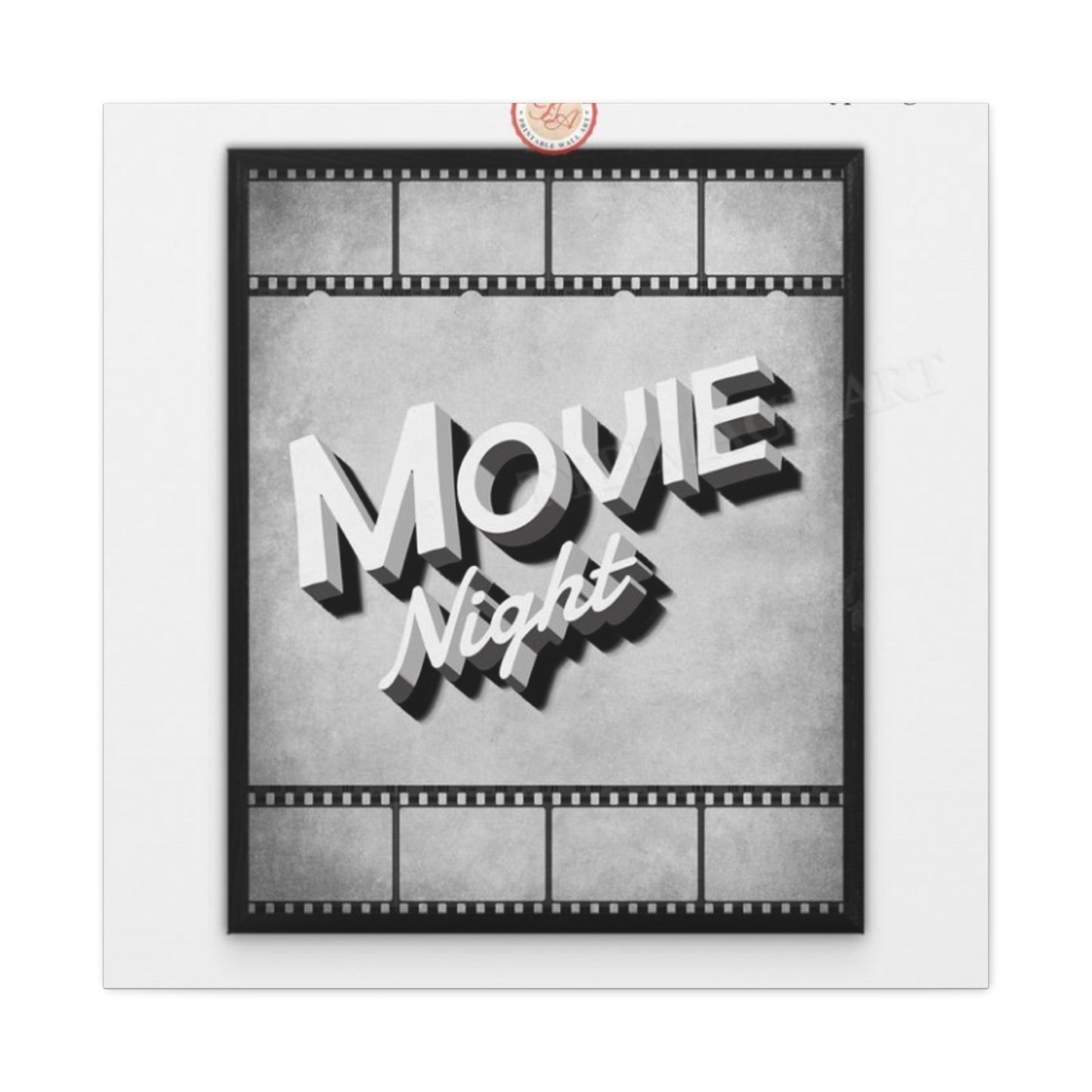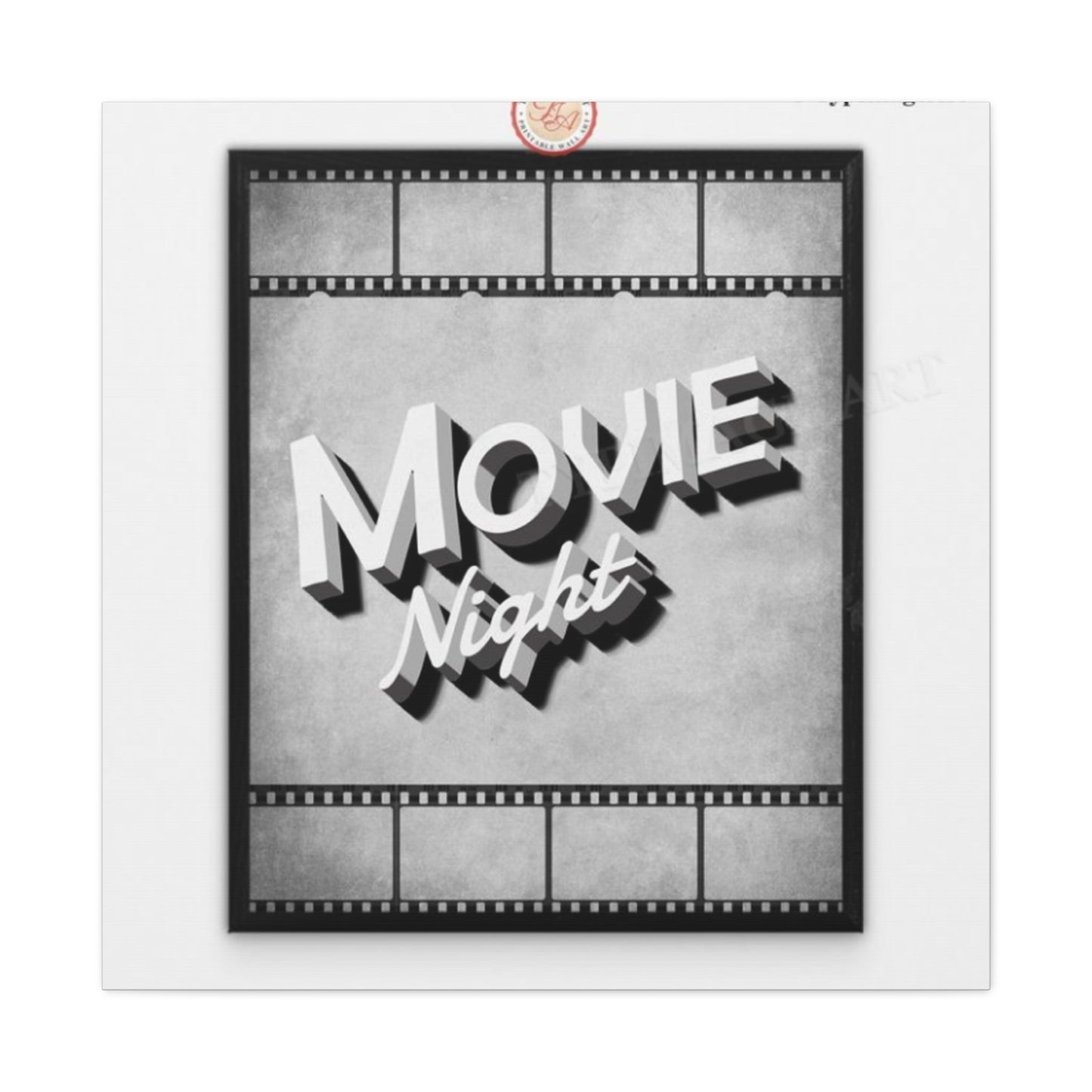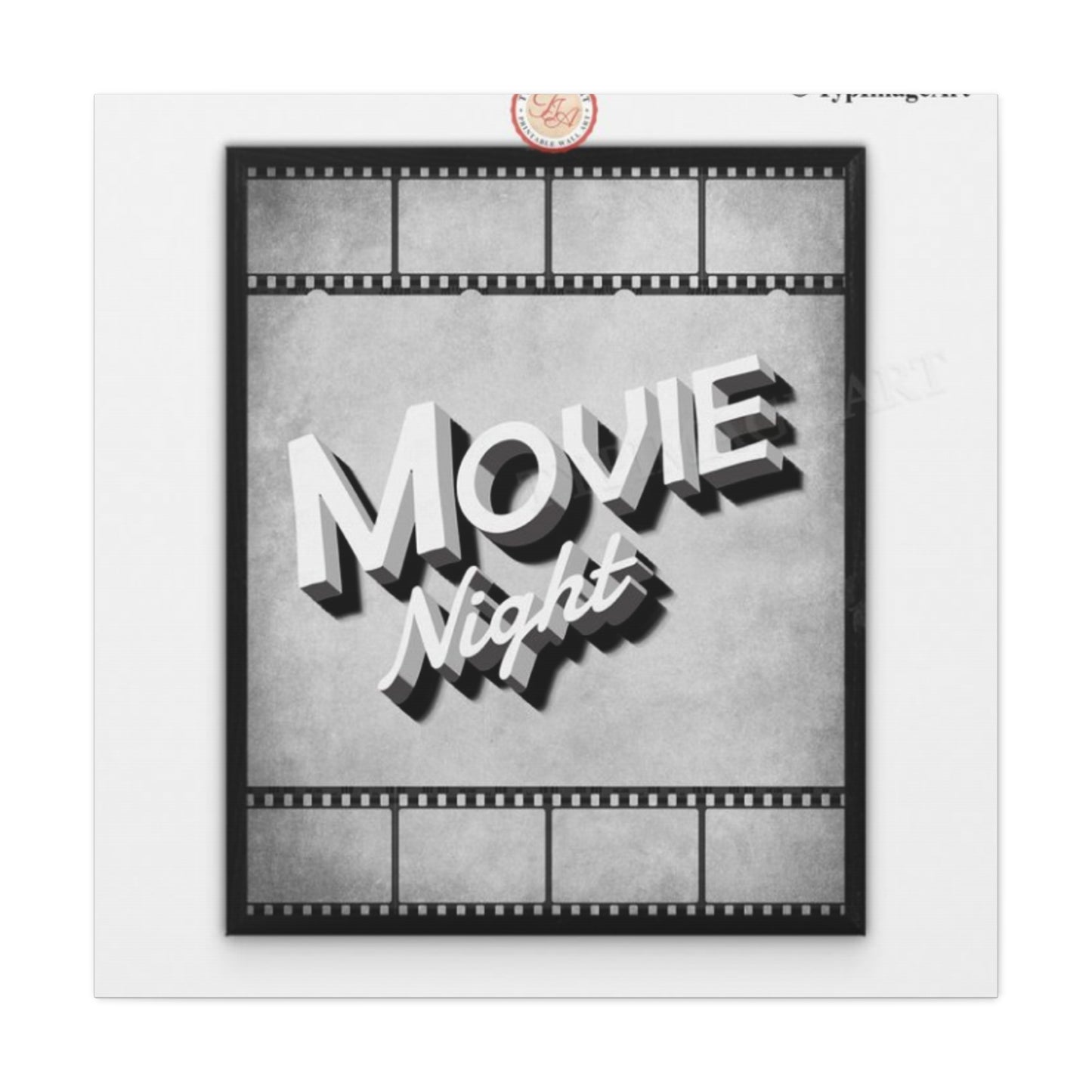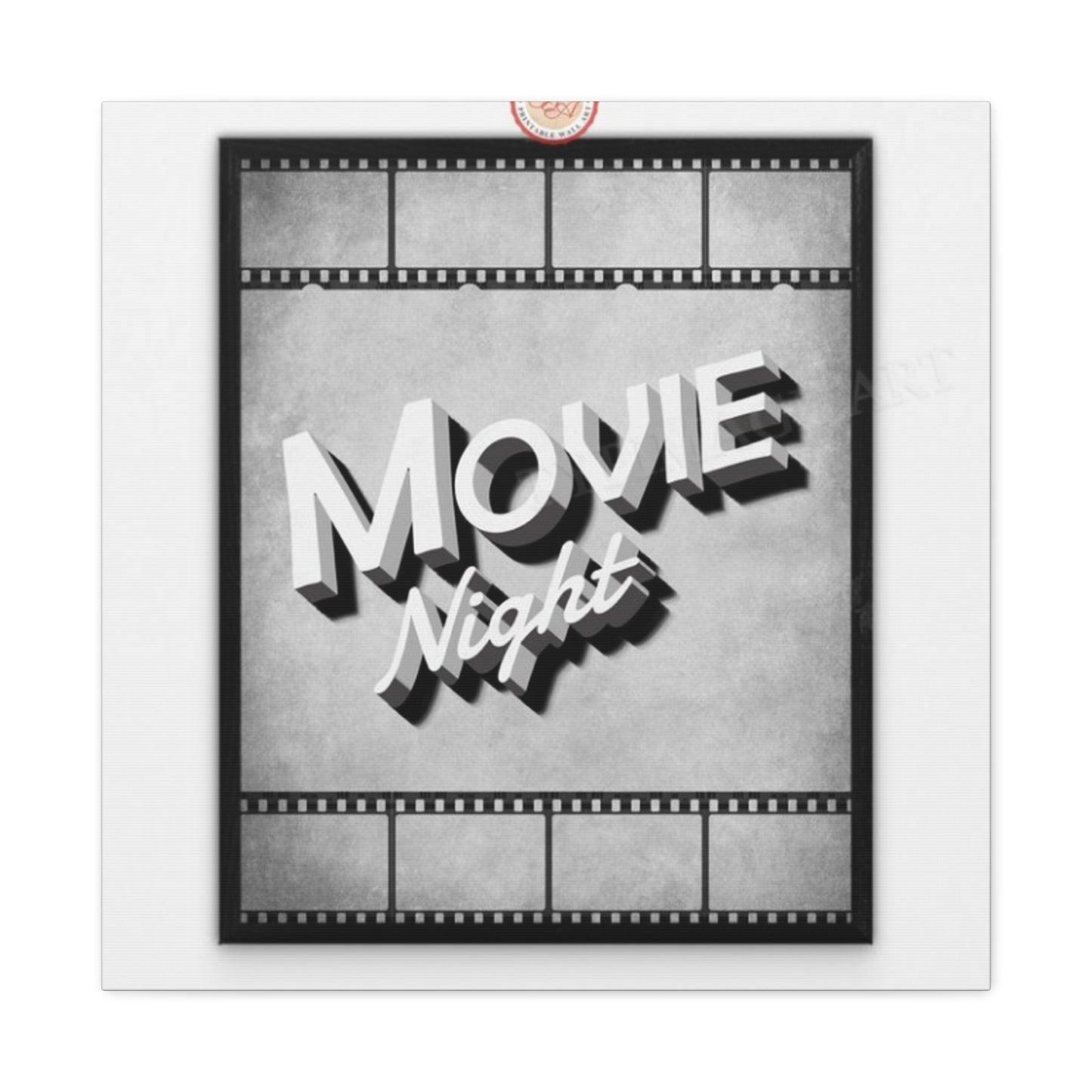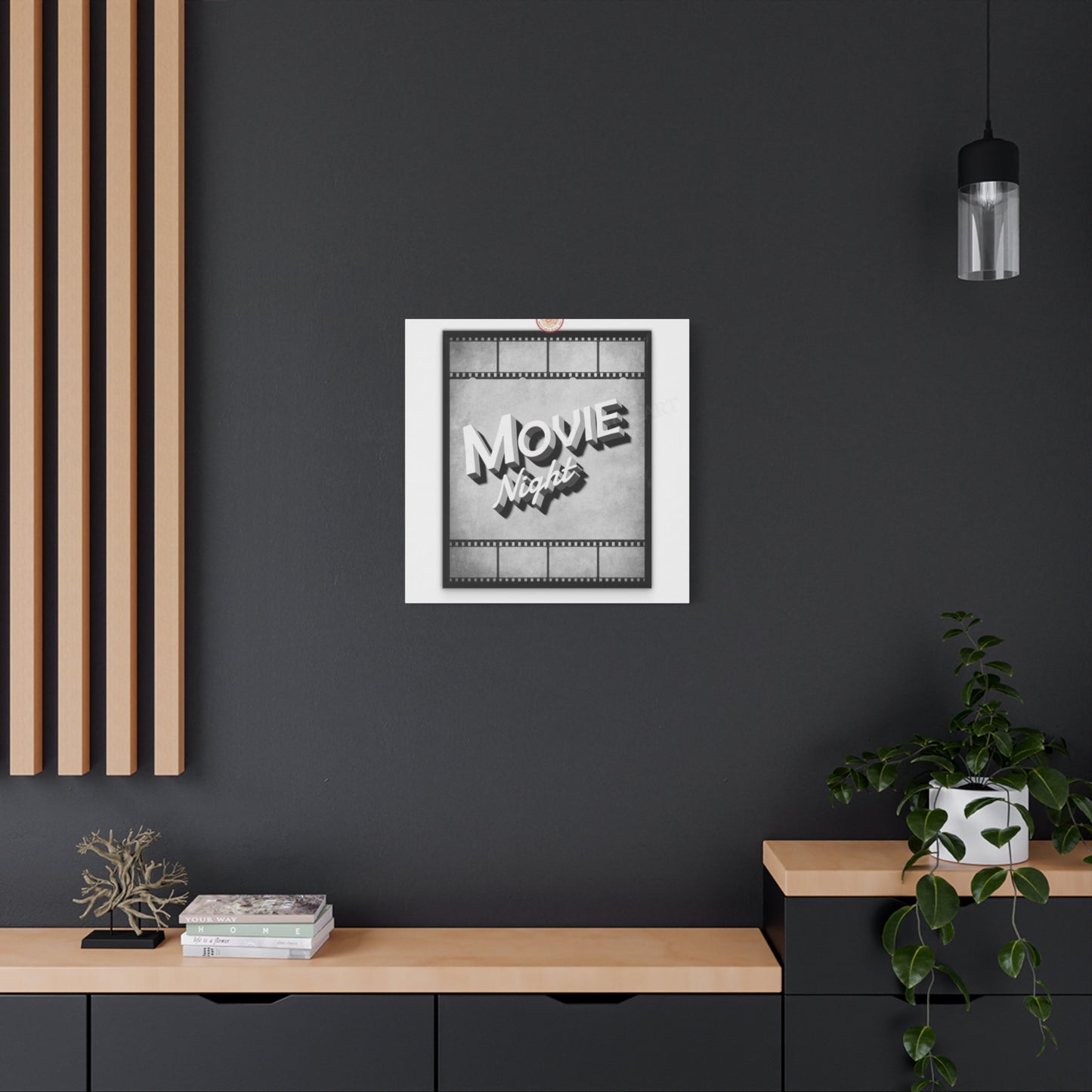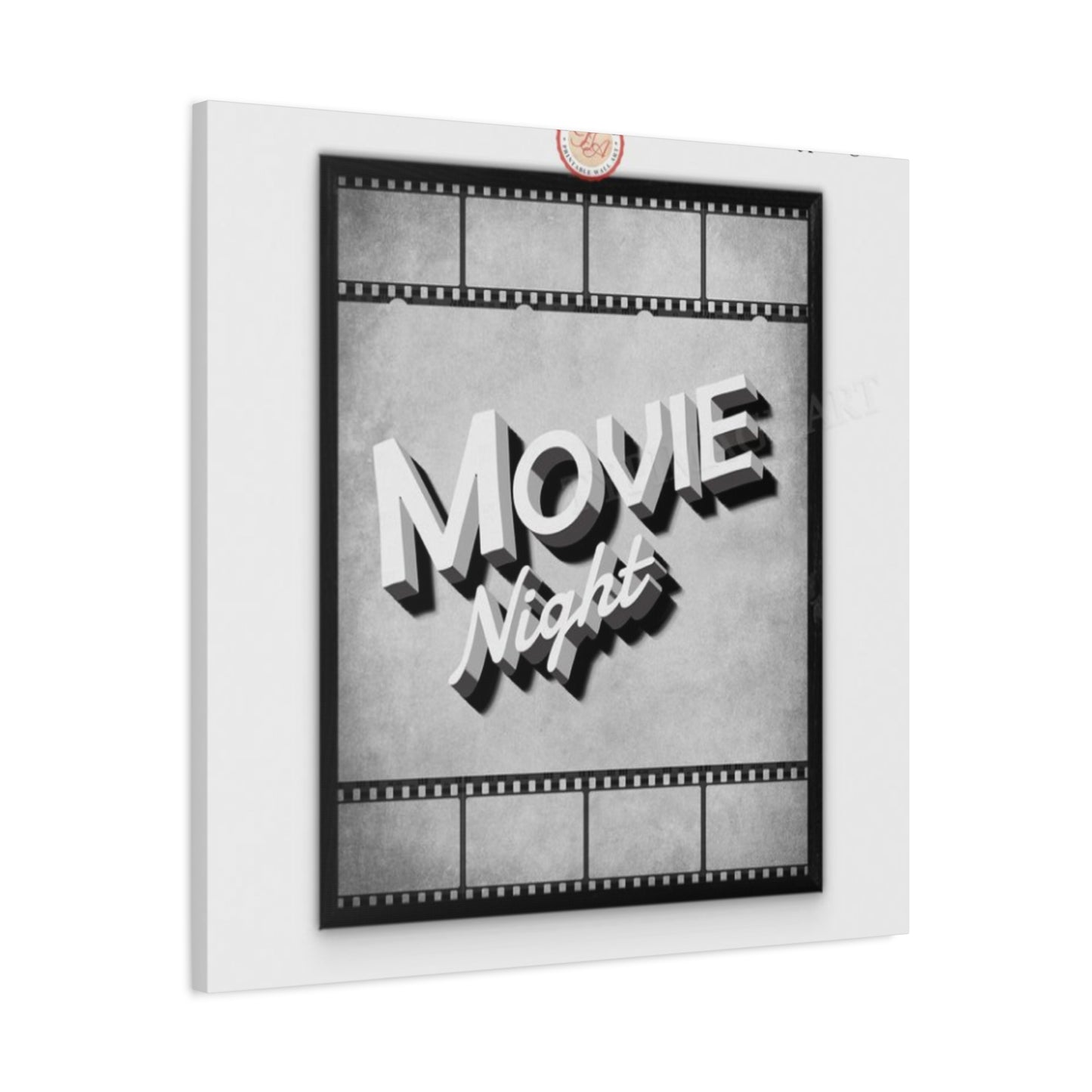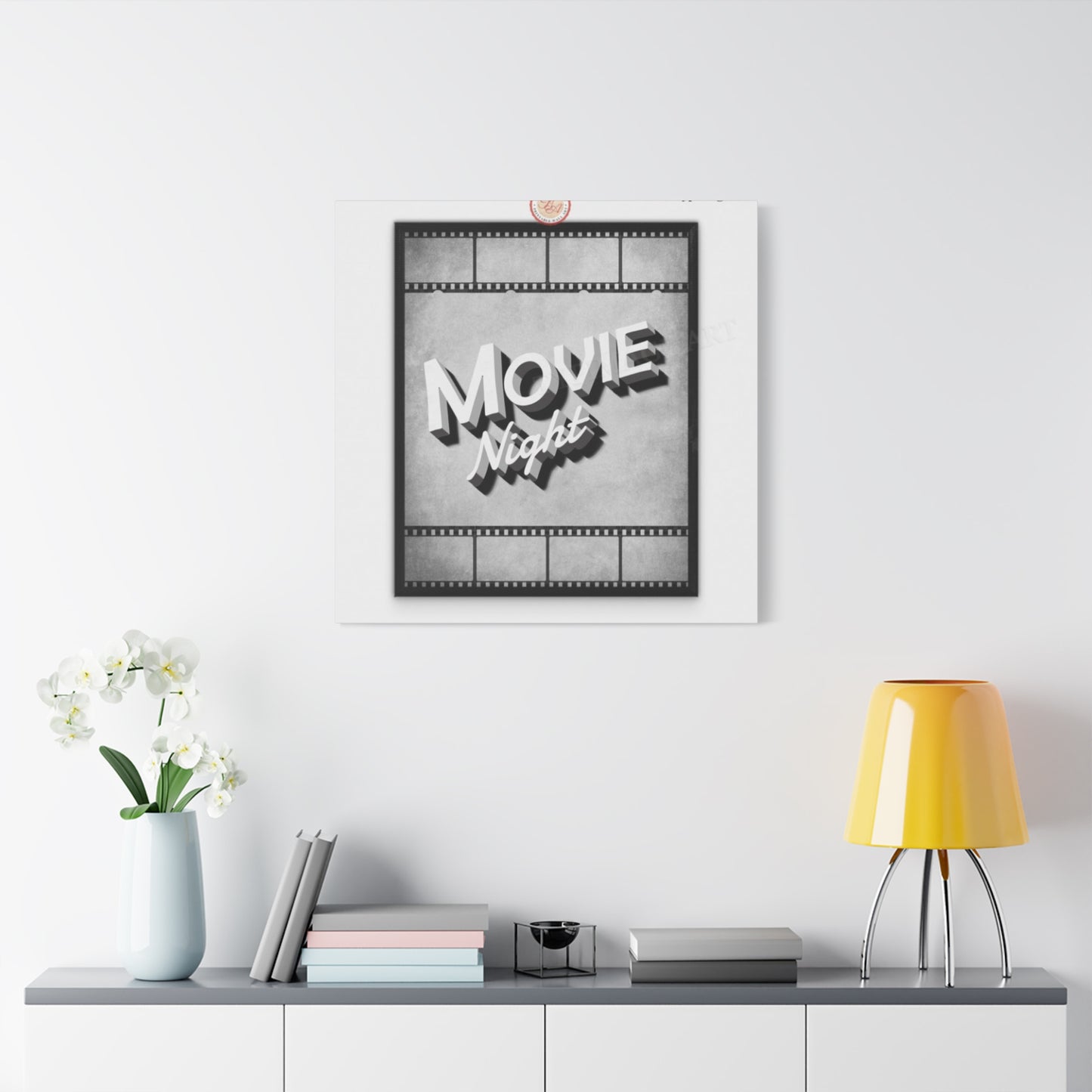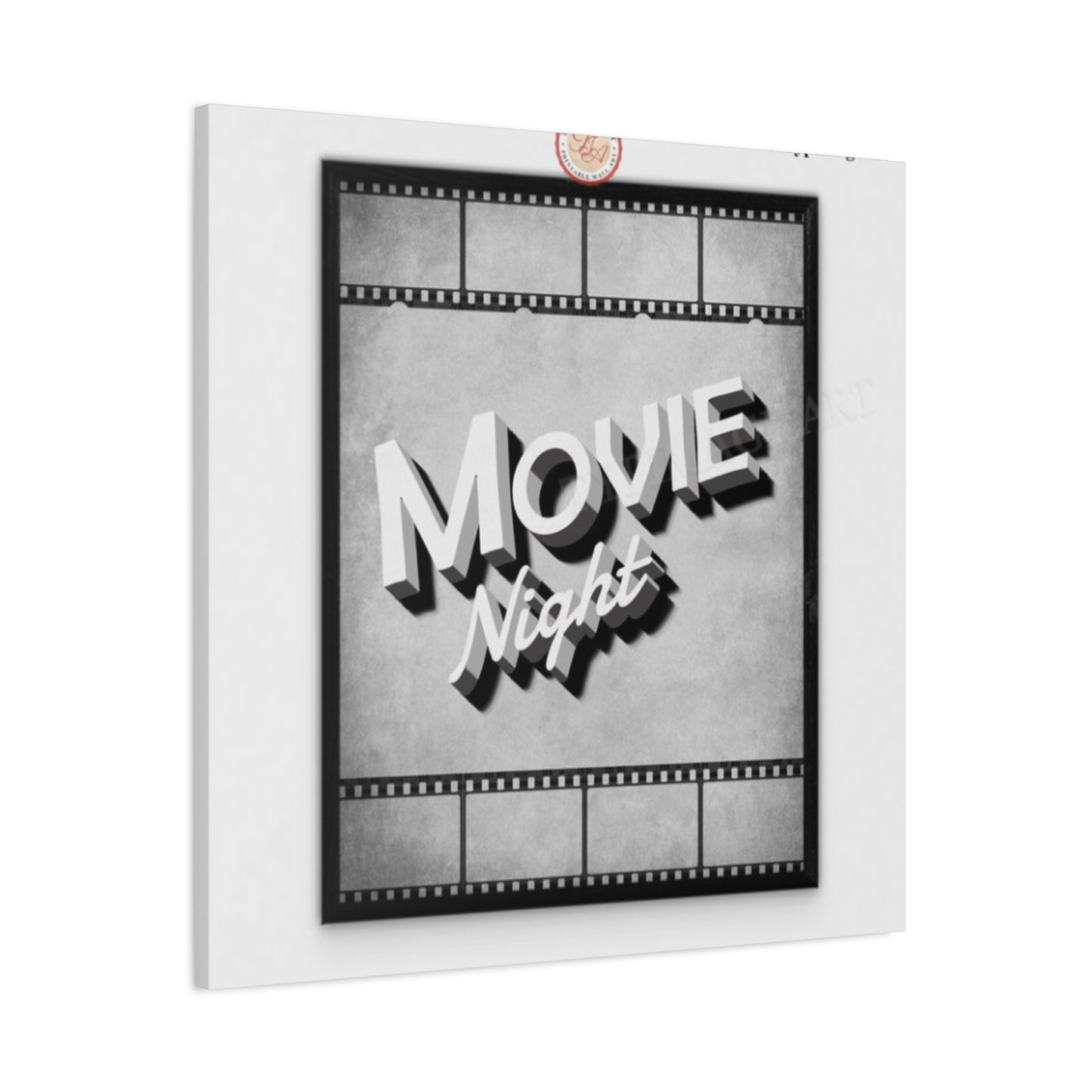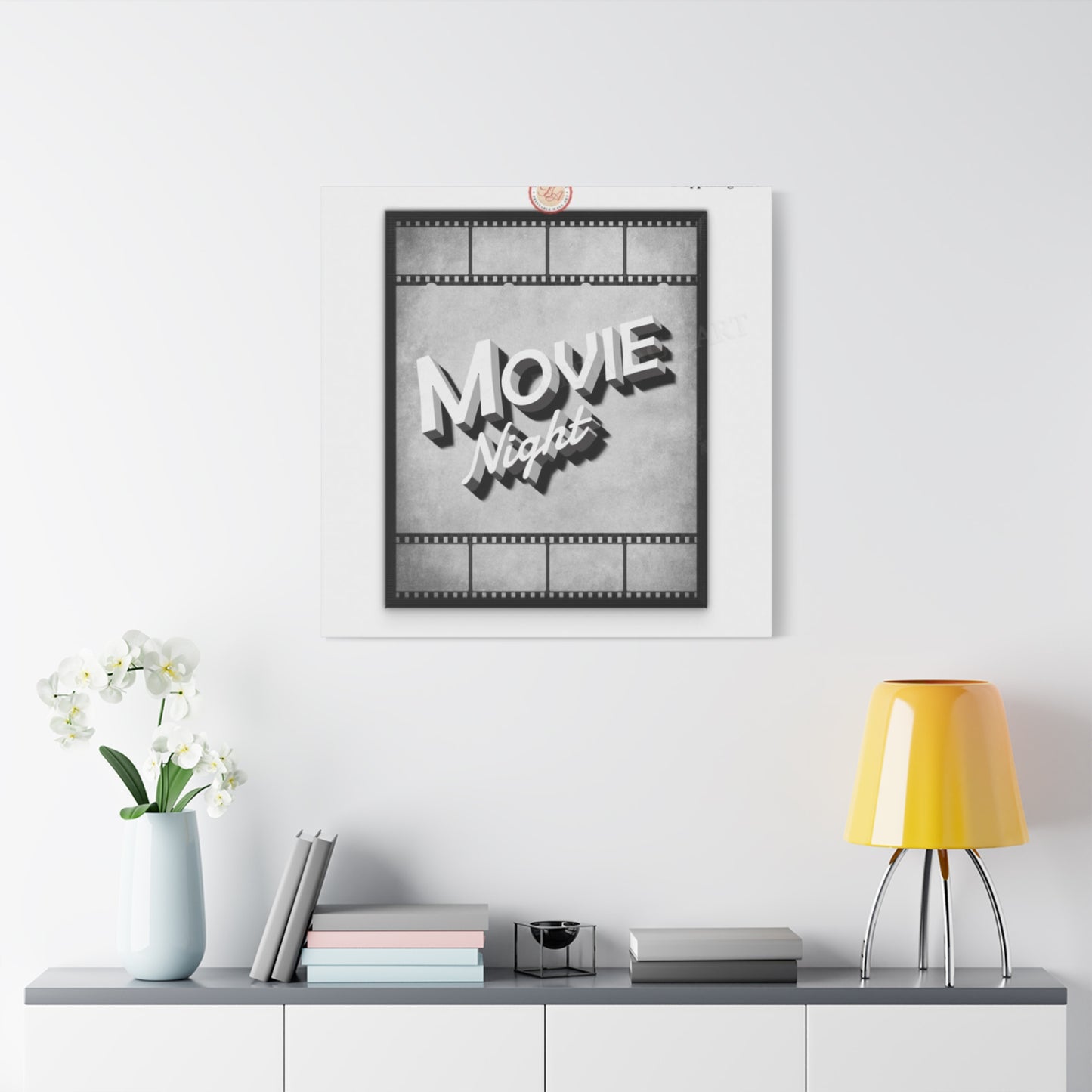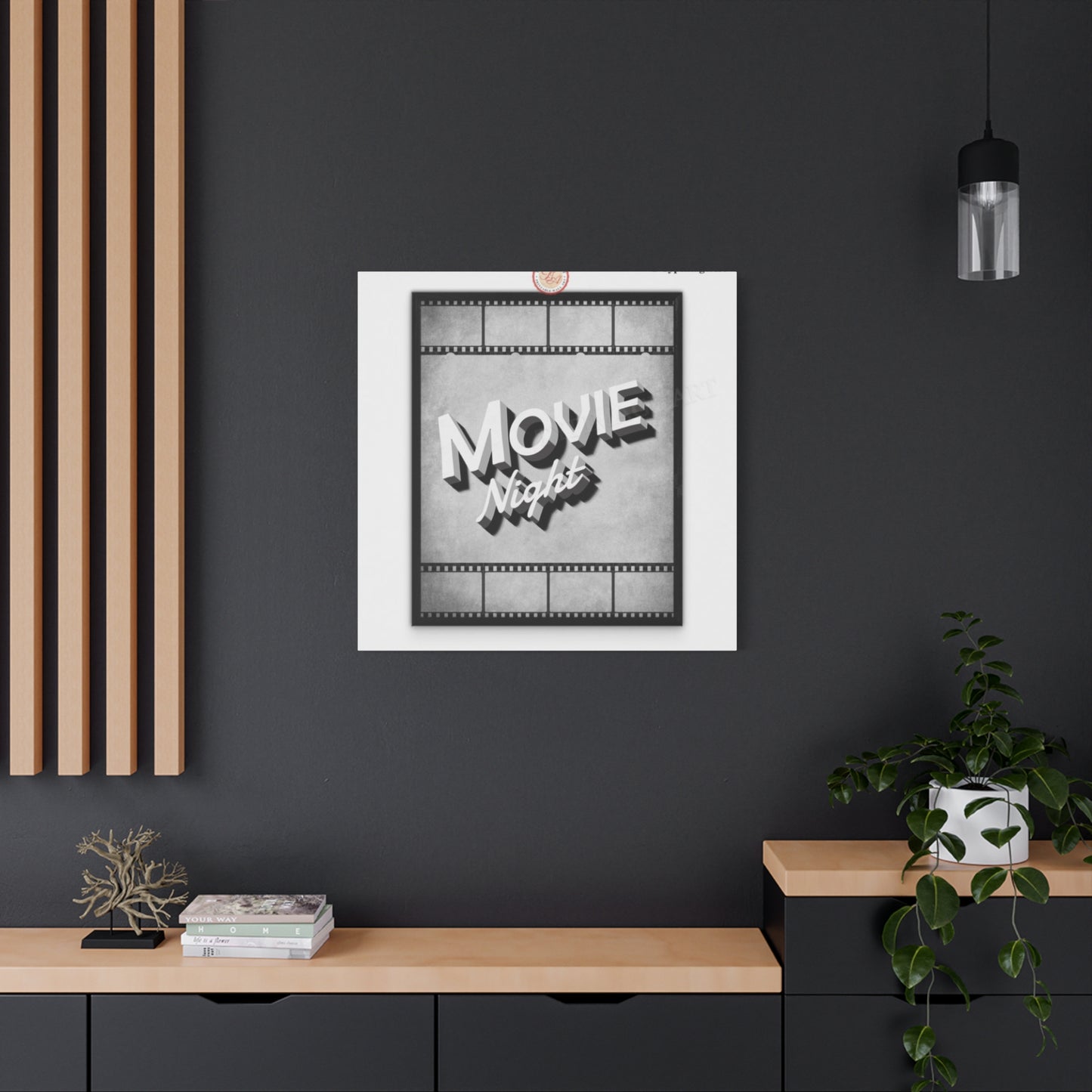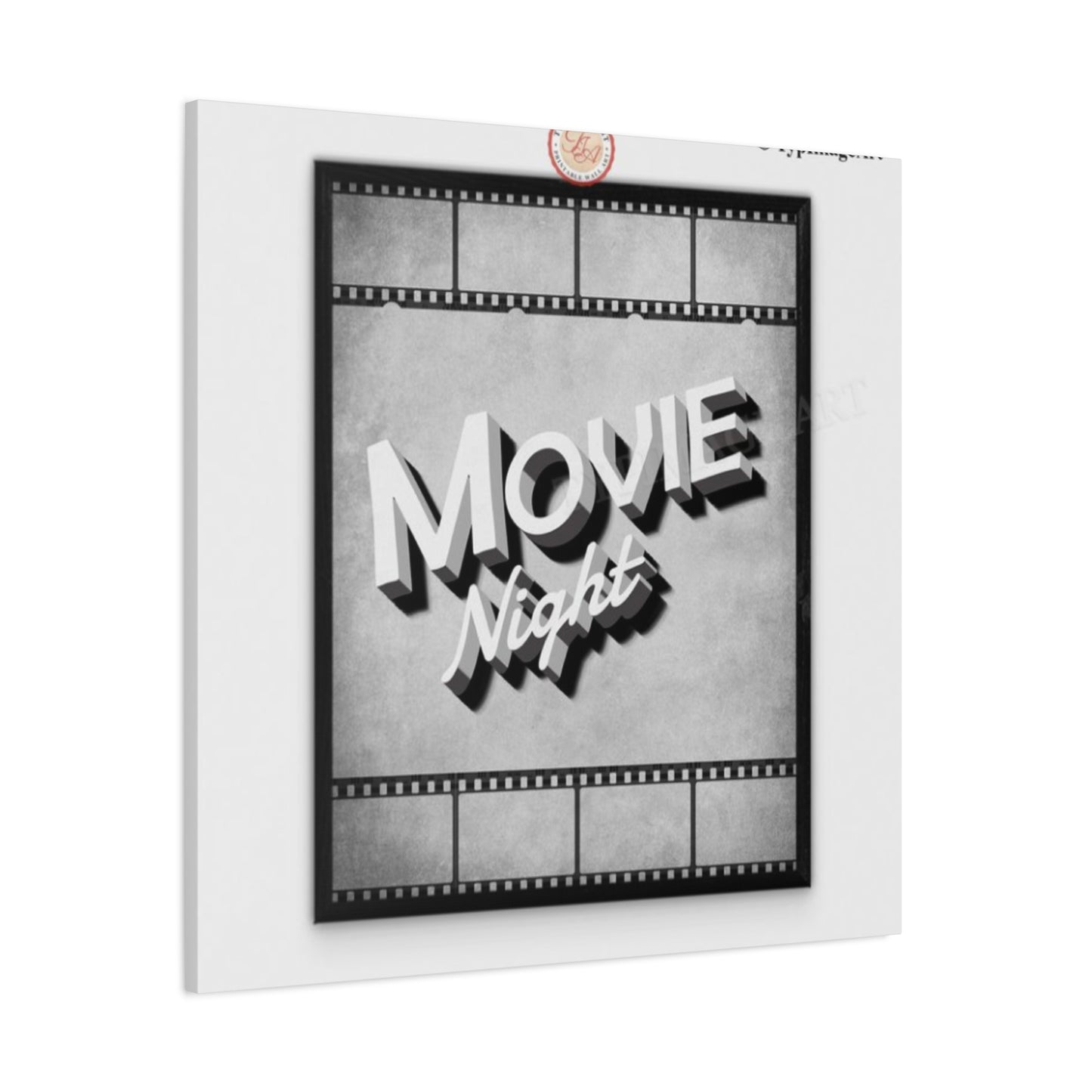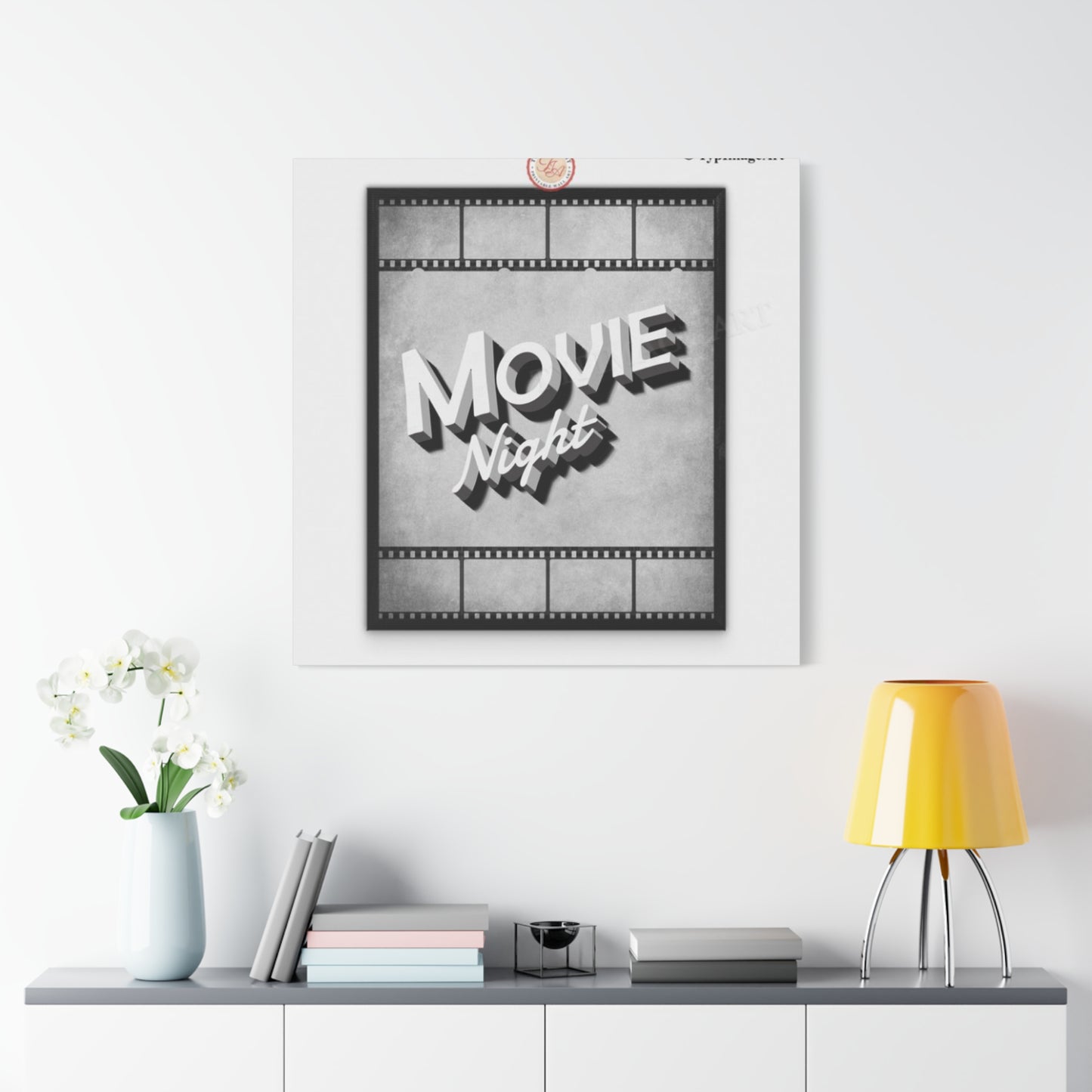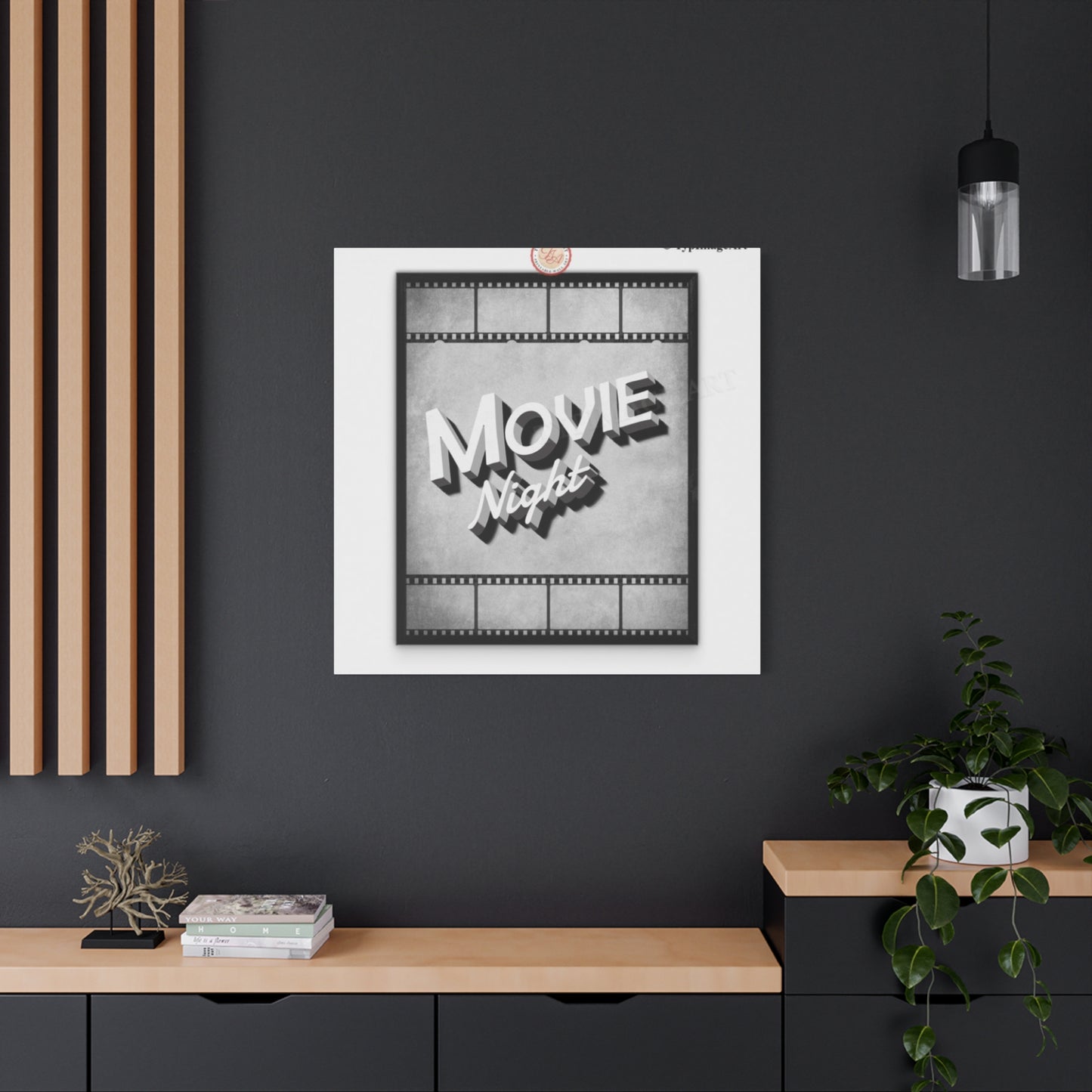Set the Scene: Stunning Movie Night Wall Art for Your Home Theater
The magic of cinema extends far beyond the silver screen, offering countless opportunities to bring beloved films into our homes through carefully curated wall art. For passionate film enthusiasts, creating an environment that celebrates their love for movies becomes a deeply personal journey of artistic expression and nostalgic storytelling. Whether you're drawn to the golden age of Hollywood, contemporary blockbusters, or indie masterpieces, incorporating movie-themed wall art transforms any room into a cinematic sanctuary that reflects your unique taste and appreciation for the art of filmmaking.
The beauty of movie-inspired wall art lies in its incredible versatility and emotional resonance. From iconic movie posters that instantly transport viewers to different worlds, to subtle nods through quote prints and character silhouettes, these decorative elements serve as conversation starters while creating an atmosphere that enhances the viewing experience. Each piece tells a story, evokes memories, and contributes to a cohesive aesthetic that celebrates the profound impact cinema has on our lives and cultural consciousness.
Creating the Perfect Atmosphere for Movie Enthusiasts
Establishing the right ambiance for movie appreciation requires thoughtful consideration of how wall art influences mood, lighting, and overall aesthetic appeal. The selection of movie-themed decorations should complement the existing architectural elements while adding personality and character that reflects your cinematic preferences. This approach involves understanding how different artistic styles, color palettes, and placement strategies work together to create a harmonious environment that enhances both casual viewing and dedicated film study sessions.
The psychology of movie-themed wall art plays a crucial role in how we experience entertainment in our homes. Familiar imagery from beloved films creates comfort and nostalgia, while new discoveries can inspire exploration of different genres and eras. The visual elements we choose to display communicate our identity as film lovers and create an environment where appreciation for cinema can flourish. This connection between personal taste and environmental design demonstrates how wall art serves both aesthetic and emotional functions in our living environments.
Consider the viewing angles and sightlines when positioning movie-themed artwork, ensuring that pieces remain visible and impactful whether viewers are seated or moving throughout the room. The scale and proportion of artwork should complement the furniture arrangement and architectural features, creating visual balance that enhances rather than overwhelms the viewing experience. Strategic lighting can dramatically enhance the impact of movie wall art, with properly positioned fixtures highlighting key pieces while maintaining the appropriate ambiance for film watching.
The relationship between wall art and acoustics deserves attention in movie-focused rooms, as certain materials and textures can influence sound quality. Canvas prints and framed posters can help absorb sound reflections, contributing to better audio clarity during film screenings. This technical consideration demonstrates how decorative choices can serve dual purposes, combining aesthetic appeal with functional benefits that improve the overall entertainment experience.
Iconic Movie Poster Displays and Arrangements
The art of displaying movie posters requires careful attention to composition, spacing, and thematic coherence to create visually striking arrangements that celebrate cinema history. Original vintage posters command attention and respect, but high-quality reproductions can achieve similar impact while remaining accessible to collectors with varying budgets. The key lies in understanding how different poster styles, from minimalist modern designs to elaborate illustrated classics, can work together to tell a cohesive story about your cinematic interests and aesthetic preferences.
Gallery wall arrangements offer unlimited creative possibilities for showcasing multiple movie posters while maintaining visual harmony. The traditional approach involves selecting films from a specific era, genre, or director, creating thematic consistency that guides the eye naturally across the display. Alternatively, eclectic arrangements can juxtapose different styles and periods, creating dynamic visual conversations between classic Hollywood glamour and contemporary graphic design approaches.
Frame selection significantly impacts the presentation and preservation of movie posters, with archival-quality materials ensuring long-term protection while enhancing visual appeal. Consistent framing creates unity within large arrangements, while varied frame styles can add visual interest and personality to smaller displays. The choice between matting and direct mounting depends on the poster's condition, size, and desired aesthetic impact, with each approach offering distinct advantages for different types of movie artwork.
Lighting considerations become particularly important when displaying valuable or vintage movie posters, as UV exposure can cause fading and deterioration over time. LED spotlights with adjustable color temperature allow for dramatic presentation while protecting artwork from harmful radiation. The interplay between ambient lighting and focused illumination can create theatrical effects that enhance the cinematic atmosphere while showcasing the artistic qualities of movie poster design.
Rotation strategies allow collectors to display their entire collection over time, preventing static displays from becoming stale or overwhelming. Seasonal rotations can align with film festival schedules, holiday themes, or anniversary celebrations, keeping the wall art fresh and engaging. This approach also allows for the protection and preservation of rare or delicate posters by limiting their exposure time while maintaining an dynamic and evolving display environment.
Themed Room Concepts and Cohesive Design
Developing cohesive themed movie rooms requires balancing specific cinematic references with broader design principles that create comfortable and functional living environments. Genre-specific themes offer focused approaches, whether celebrating the noir atmosphere of detective films, the vibrant energy of musicals, or the futuristic aesthetics of science fiction cinema. Each genre brings distinct color palettes, typography styles, and imagery that can influence everything from wall colors to furniture selection and lighting design.
Director-focused themes provide another compelling approach, celebrating the distinctive visual language of filmmakers like Alfred Hitchcock, Tim Burton, or Wes Anderson. These auteur-inspired rooms can incorporate subtle references to recurring motifs, color schemes, and compositional elements that appear throughout a director's body of work. This approach demonstrates sophisticated appreciation for cinematic artistry while creating unique and personalized environments that reflect deep engagement with film as an art form.
Era-specific themes transport viewers to particular periods in cinema history, from the golden age of Hollywood to the innovative decades of the French New Wave or contemporary independent filmmaking. These temporal approaches allow for exploration of how visual styles, fashion, and cultural attitudes have evolved throughout cinema history. The incorporation of period-appropriate furniture, color schemes, and decorative elements creates immersive environments that enhance understanding and appreciation of different cinematic movements.
International cinema themes celebrate the global nature of filmmaking, incorporating artwork and references from diverse film traditions around the world. These multicultural approaches can highlight the visual languages of different national cinemas, from the bold graphics of Soviet film posters to the elegant minimalism of Japanese cinema artwork. This global perspective demonstrates the universal appeal of cinema while educating viewers about different cultural approaches to storytelling and visual design.
Franchise-focused themes work particularly well for dedicated entertainment areas, allowing for deep exploration of beloved film series and their expanded universes. These comprehensive approaches can incorporate everything from original promotional materials to contemporary artistic interpretations, creating environments that celebrate both nostalgic attachment and ongoing creative engagement with familiar characters and worlds.
Vintage and Classic Cinema Wall Art
The allure of vintage movie wall art extends beyond mere nostalgia, representing sophisticated appreciation for the golden age of cinema advertising and graphic design. Original vintage posters from the studio system era showcase the craftsmanship and artistic vision that went into promoting films when movie attendance was a central part of American culture. These pieces serve as historical documents, preserving the visual language and cultural attitudes of their respective periods while maintaining their power to evoke emotion and excitement about classic films.
The distinctive artistic styles of different decades offer rich material for wall art collections, from the art deco influences of 1930s posters to the photographic realism that emerged in the 1970s. Each period brought unique approaches to typography, illustration, and layout design that reflected broader cultural movements and technological capabilities. Understanding these historical contexts enhances appreciation for vintage movie art while informing contemporary collecting and display decisions.
Authentication and preservation considerations become crucial when dealing with valuable vintage movie materials, as condition directly impacts both aesthetic appeal and monetary value. Professional conservation techniques can restore damaged posters while maintaining their historical integrity, though collectors must balance restoration costs against the inherent value and personal significance of particular pieces. Proper storage and display conditions protect investments while ensuring continued enjoyment of these cultural artifacts.
Reproduction strategies allow broader access to classic movie poster designs while raising questions about authenticity and artistic value. High-quality reproductions can capture the visual impact of original designs while remaining affordable for casual collectors, though the distinction between original and reproduction materials should always remain clear. Some collectors focus exclusively on original materials, while others embrace high-quality reproductions as legitimate decorative elements that serve their intended purpose of celebrating cinema history.
The integration of vintage movie art with contemporary design elements requires careful attention to color coordination, scale relationships, and stylistic coherence. Classic movie posters can serve as focal points in modern rooms, with their bold graphics and period typography providing striking contrasts to contemporary furniture and accessories. This juxtaposition creates dynamic visual relationships that highlight both the timeless appeal of classic films and the evolution of design aesthetics over time.
Quote Prints and Typography-Based Designs
Movie quote prints represent one of the most accessible and versatile forms of cinema-inspired wall art, offering endless possibilities for personal expression and thematic development. The power of memorable dialogue extends far beyond its original cinematic context, with iconic lines becoming part of popular culture and personal vocabulary. Typography-based movie art allows for subtle references that can appeal to fellow film enthusiasts while maintaining broad aesthetic appeal for viewers unfamiliar with specific sources.
The selection of appropriate quotes requires consideration of both personal significance and visual impact, as the most meaningful lines may not always translate effectively to wall art format. Shorter, punchy quotes often work better for decorative purposes, while longer passages may require creative layout solutions to maintain readability and visual appeal. The choice between famous, widely recognized quotes and more obscure references depends on the intended audience and desired level of insider knowledge required for appreciation.
Typography selection plays a crucial role in the effectiveness of movie quote wall art, with font choices communicating mood, period, and genre associations that enhance the quote's impact. Classic serif fonts evoke traditional Hollywood elegance, while modern sans-serif treatments suggest contemporary sensibilities. Custom lettering and calligraphy approaches can create unique artistic interpretations that transform familiar quotes into distinctive decorative elements.
Color relationships in typography-based movie art require careful consideration of readability, emotional impact, and integration with surrounding design elements. High contrast combinations ensure visibility and impact, while subtle tonal relationships create sophisticated effects that reward closer examination. The background treatment, whether minimal, textured, or incorporating related imagery, significantly influences the overall aesthetic and effectiveness of quote-based wall art.
Layout and composition strategies for movie quote prints range from simple, centered presentations to complex arrangements that incorporate multiple design elements. Asymmetrical compositions can create dynamic visual interest, while traditional centered layouts emphasize the importance and authority of the quoted text. The integration of supporting graphics, imagery, or decorative elements should enhance rather than compete with the typography for attention and impact.
Modern and Contemporary Film Wall Art
Contemporary movie wall art reflects current design trends while celebrating both recent films and reinterpretations of classic cinema through fresh artistic lenses. Modern graphic design approaches often emphasize minimalism, bold typography, and conceptual imagery that distills complex narratives into essential visual elements. This aesthetic evolution demonstrates how movie art continues to adapt and respond to changing cultural sensibilities while maintaining its core function of celebrating and promoting cinematic experiences.
Digital art techniques have revolutionized movie poster design and wall art creation, enabling artists to experiment with effects, compositions, and color relationships that were previously impossible or prohibitively expensive. These technological capabilities have democratized movie art creation, allowing independent artists to produce striking interpretations of beloved films while established studios explore more adventurous promotional approaches. The result is an explosion of creative diversity that offers unprecedented options for movie art collectors and enthusiasts.
Alternative movie poster movements have gained significant momentum through online communities and social media platforms, with artists creating unauthorized reinterpretations of classic and contemporary films that emphasize artistic vision over commercial considerations. These grassroots movements often produce more experimental and personal responses to cinematic source material, resulting in wall art that appeals to sophisticated collectors seeking unique and unconventional decorative options.
The influence of contemporary art movements on movie wall art demonstrates the ongoing dialogue between high art and popular culture, with techniques from abstract expressionism, pop art, and conceptual art finding expression in cinema-inspired decorative pieces. This cross-pollination enriches both artistic traditions while creating wall art that appeals to viewers interested in both film history and contemporary artistic expression.
Sustainability considerations have begun influencing modern movie wall art production, with environmentally conscious artists and collectors seeking materials and processes that minimize ecological impact. Digital printing on recycled materials, local production to reduce shipping distances, and durable construction methods that extend product lifespan all contribute to more responsible approaches to decorative art consumption and collection.
DIY Project Ideas and Personalization
Creating custom movie wall art through do-it-yourself projects offers opportunities for personal expression while developing artistic skills and reducing decoration costs. Simple techniques like photo manipulation, collage creation, and hand lettering can produce unique pieces that reflect individual taste and technical abilities. These projects provide satisfaction through personal accomplishment while ensuring that resulting wall art perfectly matches specific aesthetic preferences and room requirements.
Digital design tools have made sophisticated movie art creation accessible to individuals without formal graphic design training, with user-friendly software enabling complex compositions, typography treatments, and special effects. Online tutorials and template resources provide guidance and inspiration for creators at all skill levels, while printing services offer professional-quality output that rivals commercially produced alternatives. This accessibility has expanded the creative possibilities available to movie art enthusiasts.
Mixed media approaches combine traditional art techniques with movie-related materials to create textured, dimensional pieces that engage multiple senses and reward close examination. Incorporating actual film strips, ticket stubs, soundtrack album covers, and other movie memorabilia creates deeply personal wall art that tells stories about individual viewing experiences and cinematic journeys. These approaches blur the line between art creation and memory preservation.
Collaborative projects involving family members or fellow movie enthusiasts can produce unique wall art while strengthening social bonds through shared creative activities. Group projects might involve collective decision-making about favorite films, shared execution of complex compositions, or individual contributions to themed series that work together as cohesive displays. These collaborative approaches often produce results that exceed individual capabilities while creating lasting memories of the creation process.
Documentation and iteration strategies help DIY movie art creators learn from each project while building portfolios of personal work that can evolve over time. Photographing work-in-progress stages, maintaining material and technique notes, and seeking feedback from others support artistic development while creating resources for future projects. This systematic approach transforms casual creativity into serious artistic practice that can produce increasingly sophisticated results.
Home Theater Integration and Acoustics
The integration of movie wall art with home theater systems requires careful consideration of both aesthetic harmony and functional performance, as decorative elements can significantly impact viewing experience and sound quality. Strategic placement of artwork ensures visual appeal without interfering with screen visibility or creating distracting reflections that diminish image quality. The scale and positioning of wall art should complement rather than compete with primary viewing equipment while maintaining thematic coherence throughout the entertainment area.
Acoustic considerations play a crucial role in home theater design, with wall art materials and placement affecting sound reflection, absorption, and overall audio performance. Canvas prints and fabric-covered panels can help control acoustic reflections while serving decorative functions, contributing to both visual appeal and audio clarity. Understanding these dual functions allows for informed decisions about wall art selection that optimize both aesthetic and technical aspects of the viewing environment.
Lighting integration becomes particularly complex in dedicated home theater installations, where movie wall art must remain visible during social periods while avoiding interference with projected or displayed images during viewing sessions. Programmable lighting systems can provide different illumination scenarios for various activities, highlighting wall art during intermissions while creating appropriate darkness for film presentation. This technical sophistication demonstrates how contemporary home theater design balances multiple functional requirements.
Cable management and equipment integration challenges require creative solutions that maintain clean, uncluttered appearances while accommodating the technical infrastructure necessary for modern home entertainment systems. Wall art placement must consider the locations of power outlets, cable runs, and equipment ventilation requirements, often necessitating custom framing solutions or flexible mounting systems that allow for future modifications and upgrades.
Seating arrangements and viewing angles influence both wall art visibility and overall room composition, with multiple viewing positions requiring consideration during art placement decisions. The relationship between primary seating areas and wall art displays should enhance the entertainment experience while maintaining visual interest from various vantage points throughout the room. This multi-perspective approach ensures that wall art remains effective and engaging regardless of viewer position.
Children's Movie-Themed Decorations
Designing movie-themed wall art for children's rooms requires balancing entertainment value with age-appropriate content and developmental considerations. Animated films provide rich source material for colorful, engaging wall art that can grow with children while maintaining educational and inspirational value. The selection of movies and characters should reflect positive values and role models while appealing to children's natural sense of wonder and imagination.
Safety considerations become paramount in children's decorating projects, with materials, mounting methods, and accessibility requirements differing significantly from adult-focused installations. Non-toxic materials, secure mounting systems that prevent falling objects, and rounded corners on frames help ensure safe environments while maintaining decorative impact. These practical considerations should inform every aspect of children's movie wall art selection and installation.
Educational opportunities arise naturally from movie-themed decorations, with wall art serving as starting points for discussions about storytelling, character development, cultural diversity, and artistic expression. Geography lessons can emerge from films set in different locations, while historical contexts can provide learning opportunities about different time periods. This educational potential transforms decorative elements into valuable learning tools that support cognitive development.
Growth and adaptation strategies acknowledge that children's interests and maturity levels change rapidly, requiring flexible approaches to wall art that can evolve without complete replacement. Modular systems, interchangeable elements, and timeless designs help extend the useful life of children's movie decorations while accommodating changing preferences. Planning for future modifications can reduce long-term costs while maintaining engaging environments.
Participation opportunities allow children to contribute to their room decoration decisions, fostering ownership and pride while developing aesthetic appreciation and decision-making skills. Age-appropriate involvement in art selection, arrangement decisions, and even creation projects helps children develop personal taste while learning about visual composition and design principles. This collaborative approach creates more meaningful and satisfying decorative outcomes.
Pop Culture Integration and Current Trends
The intersection of movie wall art with broader pop culture phenomena creates opportunities for dynamic, relevant decorations that reflect contemporary cultural moments and trends. Social media influences, meme culture, and viral content often originate from or reference cinematic sources, creating new forms of movie-related art that appeal to digitally native audiences. Understanding these cultural currents helps collectors and decorators stay current with evolving aesthetic preferences and cultural references.
Cross-media integration acknowledges that contemporary entertainment experiences often span multiple platforms and formats, with movies existing alongside television series, video games, podcasts, and social media content. Wall art that reflects these expanded entertainment ecosystems can create more comprehensive and relevant decorative schemes that acknowledge how audiences actually engage with contemporary media. This holistic approach produces more authentic and meaningful decorative environments.
Seasonal and event-based rotation strategies allow movie wall art to respond to awards seasons, film festival calendars, anniversary celebrations, and other cultural moments that heighten interest in specific films or genres. These dynamic approaches keep decorative schemes fresh and engaging while demonstrating ongoing engagement with cinema culture. Temporary displays can experiment with new ideas without committing to permanent changes, allowing for creative exploration and trend testing.
Collector communities and online marketplaces have transformed how movie art enthusiasts discover, acquire, and share their collections, with social platforms enabling global conversations about aesthetic preferences and collecting strategies. These communities provide inspiration, authentication assistance, and marketplace opportunities while fostering relationships between collectors with shared interests. Participation in these communities enhances the collecting experience while providing access to rare and unique pieces.
Technology integration through augmented reality, QR codes, and interactive elements can enhance traditional movie wall art with digital enhancements that provide additional information, behind-the-scenes content, or social sharing capabilities. These hybrid approaches acknowledge that contemporary audiences expect interactive and multimedia experiences even from traditional decorative elements. While maintaining respect for classic movie art traditions, these innovations can attract new audiences and provide enhanced engagement opportunities.
Minimalist Approaches to Cinema Decor
Minimalist movie wall art focuses on essential elements and subtle references that celebrate cinema without overwhelming living environments with excessive visual stimulation. This aesthetic approach requires careful curation and editing to identify the most impactful and meaningful pieces while eliminating redundant or competing elements. The resulting environments achieve sophistication through restraint and thoughtful selection rather than comprehensive display of movie memorabilia.
Color palette restrictions characteristic of minimalist design create harmony and coherence while allowing individual pieces to achieve maximum impact through contrast and positioning. Monochromatic schemes, limited color palettes, and strategic use of accent colors can highlight specific pieces while maintaining overall visual calm. These approaches demonstrate how limitations can enhance rather than restrict creative expression and aesthetic effectiveness.
Typography and graphic elements receive increased emphasis in minimalist movie art, with clean lines, negative amounts, and geometric compositions creating sophisticated visual relationships. The removal of extraneous detail focuses attention on essential design elements while testing the artist's ability to communicate complex ideas through simple means. This reductive approach often produces more memorable and impactful results than elaborate compositions.
Quality over quantity principles guide minimalist collecting strategies, with emphasis on acquiring fewer, higher-quality pieces that serve multiple aesthetic functions within a room. This approach often results in more intentional and meaningful collections while reducing visual clutter and maintenance requirements. The careful curation process itself becomes part of the aesthetic experience, requiring deep consideration of each piece's contribution to the overall environment.
Integration with architectural elements becomes particularly important in minimalist movie wall art installations, where pieces must work harmoniously with existing structural features, furniture, and lighting systems. The reduced number of decorative elements increases the importance of each piece's relationship to its environment, requiring careful attention to scale, proportion, and positioning. This architectural awareness elevates wall art from mere decoration to integral environmental design elements.
Seasonal and Holiday Movie Decorations
Seasonal movie wall art approaches acknowledge that certain films become associated with specific times of year, holidays, or cultural celebrations, creating opportunities for dynamic decorative schemes that change throughout the annual cycle. Christmas movies, Halloween horror films, summer blockbusters, and other seasonally associated cinema provide rich material for rotating displays that maintain freshness and relevance while celebrating the cultural rhythms that connect movies to yearly experiences.
Holiday-specific movie art often combines cinematic references with traditional seasonal imagery, creating hybrid decorative schemes that appeal to both movie enthusiasts and those who appreciate conventional holiday decorating approaches. These combinations can introduce movie themes to family members who might not otherwise engage with cinema-focused decoration while maintaining sophisticated aesthetic standards that satisfy serious film collectors.
Storage and rotation logistics become crucial considerations for seasonal movie wall art programs, requiring organized systems for protecting off-season pieces while maintaining easy access for regular changeovers. Proper storage conditions preserve artwork quality while labeling and inventory systems enable efficient rotation schedules. These organizational aspects often determine the long-term success and sustainability of seasonal decoration programs.
Weather and environmental considerations influence seasonal movie art selection, with factors like humidity, temperature fluctuations, and sunlight exposure varying throughout the year in many climates. Understanding these seasonal environmental changes helps protect valuable artwork while informing decisions about which pieces are appropriate for display during different periods. Climate control and protection strategies ensure that seasonal rotation enhances rather than compromises collection preservation.
Family traditions and personal associations often develop around seasonal movie wall art programs, with specific pieces becoming anticipated elements of holiday celebrations and seasonal transitions. These emotional connections transform functional decoration programs into meaningful cultural practices that strengthen family bonds while creating lasting memories associated with both cinema and seasonal celebrations.
Investment and Collecting Strategies
The financial aspects of movie wall art collecting require understanding market dynamics, authentication processes, and long-term value trends that influence acquisition and disposal decisions. Original vintage posters from significant films can appreciate substantially over time, while reproduction materials typically hold little investment value despite serving identical decorative functions. Collectors must balance financial considerations with personal enjoyment to develop sustainable and satisfying collection strategies.
Authentication expertise becomes crucial for serious collectors, as the movie poster market includes numerous reproductions, reprints, and unauthorized copies that can be difficult to distinguish from original materials without specialized knowledge. Professional authentication services, condition assessments, and provenance documentation protect investments while ensuring that collectors understand exactly what they own. These expert services often prove essential for high-value acquisitions and insurance purposes.
Market research and trend analysis help collectors identify emerging opportunities and avoid declining market segments, with factors like anniversary celebrations, director retrospectives, and cultural rediscoveries influencing short-term demand and pricing. Long-term collecting success often requires patience and strategic thinking rather than impulsive purchasing decisions. Understanding these market dynamics enables more informed and profitable collecting activities.
Preservation and conservation investments protect valuable movie art while maintaining or enhancing its condition and market value. Professional framing, climate-controlled storage, and conservation treatments can significantly impact long-term value while ensuring continued enjoyment of collected pieces. These preservation costs should be factored into acquisition decisions and overall collection budgets.
Insurance considerations become important for valuable movie art collections, with specialized coverage often necessary to protect against theft, damage, and loss. Documentation requirements, appraisal processes, and coverage limitations require careful attention to ensure adequate protection. Regular reappraisals and policy updates maintain appropriate coverage levels as collection values change over time.
Professional Installation and Presentation
Professional installation services provide expertise in mounting, lighting, and arranging movie wall art to achieve maximum visual impact while ensuring security and preservation. These specialists understand the unique requirements of different artwork types, from delicate vintage posters to heavy canvas prints, while possessing the tools and techniques necessary for safe and effective installation. Professional services often prove cost-effective when considering the potential damage from improper installation attempts.
Lighting design specifically focused on movie wall art requires understanding how different illumination approaches affect color reproduction, visual impact, and preservation considerations. Professional lighting designers can create custom solutions that enhance artwork presentation while accommodating the functional requirements of different room types. These specialized services become particularly valuable in dedicated entertainment areas where lighting must serve multiple purposes.
Framing and matting expertise ensures that movie art receives appropriate protection and presentation enhancement while maintaining archival standards that preserve long-term value. Custom framing solutions can address unusual sizes, condition issues, and aesthetic preferences while providing museum-quality protection. Professional framers understand the specific requirements of different movie art materials and can recommend appropriate conservation approaches.
Security considerations for valuable movie art collections may require professional consultation regarding alarm systems, mounting hardware, and environmental monitoring equipment. These specialists can assess risk factors and recommend appropriate protection measures while maintaining aesthetic appeal and accessibility. Security planning becomes particularly important for collections that include rare or irreplaceable pieces.
Maintenance and care programs developed by professionals ensure that movie wall art collections receive appropriate ongoing attention while identifying potential problems before they become serious issues. Regular cleaning, condition assessments, and environmental monitoring help preserve investments while maintaining optimal presentation quality. These professional services often prevent costly conservation treatments through proactive maintenance approaches.
Color Theory and Visual Harmony
Understanding color theory principles enhances the effectiveness of movie wall art installations by creating harmonious relationships between individual pieces and their surrounding environments. Complementary color schemes create dynamic visual tension that commands attention, while analogous palettes produce serene, cohesive effects that encourage longer contemplation. The emotional associations of different colors can reinforce or contrast with the moods and themes of displayed movies, creating additional layers of meaning and aesthetic impact.
Color temperature considerations become particularly important when integrating movie wall art with artificial lighting systems, as warm and cool light sources can dramatically alter color perception and overall aesthetic effectiveness. The interplay between artwork colors and ambient lighting creates opportunities for sophisticated environmental design while posing challenges that require careful planning and execution. Understanding these relationships enables more successful integration of movie art with existing lighting conditions.
Contrast relationships within movie wall art arrangements require balancing visual excitement with overall harmony, as excessive contrast can create chaotic effects while insufficient variation may produce boring results. The strategic use of neutral colors and transitional elements helps manage contrast levels while maintaining visual interest throughout large installations. These techniques enable the display of diverse movie art collections within cohesive aesthetic frameworks.
Cultural color associations influence how viewers interpret and respond to movie wall art, with different cultural backgrounds bringing varied symbolic meanings and emotional responses to color choices. Understanding these cultural dimensions becomes particularly important when displaying international cinema art or creating environments intended for diverse audiences. Sensitivity to cultural color meanings enhances the accessibility and effectiveness of movie art installations.
Seasonal color considerations acknowledge that natural lighting conditions, fashion trends, and cultural preferences shift throughout the annual cycle, potentially affecting the perceived effectiveness of movie wall art installations. Awareness of these seasonal influences can inform artwork selection and installation decisions while suggesting opportunities for temporary modifications that maintain freshness and relevance throughout the year.
Digital Integration
Digital display technologies offer new possibilities for movie wall art through high-resolution screens, projection systems, and interactive installations that can showcase dynamic content, behind-the-scenes materials, and changing exhibitions. These technological approaches enable unprecedented flexibility and content variety while raising questions about the relationship between traditional and digital art forms. Understanding the capabilities and limitations of digital display technologies helps collectors and decorators make informed decisions about incorporating these systems into movie art installations.
Augmented reality applications can enhance traditional movie wall art with interactive features, additional information layers, and social sharing capabilities that appeal to contemporary audiences accustomed to multimedia experiences. These hybrid approaches respect traditional art forms while providing enhanced engagement opportunities that can attract new audiences and provide educational value. The integration of digital enhancements requires careful consideration to avoid overwhelming or diminishing the impact of core artistic content.
Streaming and content integration possibilities allow movie wall art installations to incorporate synchronized multimedia presentations, matching visual displays with related audio content, behind-the-scenes footage, or commentary tracks. These comprehensive experiences can provide deeper engagement with cinema art while demonstrating the connections between visual design and broader filmmaking practices. Technical infrastructure requirements for these integrations require planning and investment but can produce highly engaging results.
Social media and sharing integration acknowledges that contemporary audiences expect to document and share their experiences with movie art installations, creating opportunities for viral marketing and community building while requiring consideration of photography-friendly design approaches. Understanding social media dynamics and visual communication principles can inform installation decisions that enhance both direct viewing experiences and secondary digital sharing outcomes.
Maintenance and technical support requirements for technology-enhanced movie wall art installations often exceed those of traditional approaches, requiring ongoing attention to software updates, hardware reliability, and user interface design. These considerations should inform decisions about incorporating digital elements while ensuring that technological enhancements enhance rather than complicate the core movie art experience.
Budget-Friendly Decorating Solutions
Creating impressive movie wall art displays within limited budgets requires creativity, resourcefulness, and strategic prioritization rather than expensive original pieces or professional services. Print-on-demand services, digital downloads, and reproduction materials can provide high-quality visual impact at fraction of original artwork costs while serving identical decorative functions. Understanding where to invest limited resources for maximum impact enables successful movie art installations regardless of budget constraints.
DIY framing and mounting solutions can significantly reduce installation costs while providing opportunities for creative customization that may exceed commercially available options. Basic tools, materials, and techniques enable high-quality results for motivated individuals while developing valuable skills that can be applied to future projects. Online tutorials and community resources provide guidance and inspiration for budget-conscious movie art enthusiasts.
Thrift stores, estate sales, and online marketplaces often yield unexpected treasures for movie art collectors, with valuable pieces sometimes available at substantial discounts from uninformed sellers. Developing expertise in identifying authentic materials and assessing condition helps budget-conscious collectors find genuine bargains while avoiding costly mistakes. These alternative acquisition strategies require patience and knowledge but can produce exceptional results for persistent searchers.
Seasonal sales, promotional periods, and bulk purchasing opportunities provide additional savings for movie art collectors, with many retailers offering significant discounts during predictable annual cycles. Understanding these market patterns and planning purchases accordingly can stretch limited budgets while building comprehensive collections over time. Strategic timing of major purchases often produces substantial savings compared to immediate gratification approaches.
Collaborative purchasing and shared collections among friends or family members can enable access to higher-quality pieces than individual budgets might permit while fostering social connections around shared interests. These cooperative approaches require clear agreements and communication but can produce exceptional results while building stronger relationships through shared appreciation for cinema art.
Global Cinema and Cultural Representation
International movie wall art exposes viewers to diverse cinematic traditions while celebrating the global nature of filmmaking and cultural expression. Japanese film posters demonstrate distinctive aesthetic approaches that emphasize subtlety and symbolic imagery, while Italian giallo posters showcase bold graphic design and dramatic color relationships. These cultural variations in movie art provide educational opportunities while adding visual diversity and international sophistication to decorative schemes.
Cultural sensitivity considerations become important when displaying international cinema art, as imagery, text, and symbolic elements may carry meanings and associations that are not immediately apparent to viewers from different cultural backgrounds. Respectful presentation requires research and understanding of cultural contexts while avoiding appropriation or misrepresentation of cultural materials. This awareness enhances appreciation while preventing unintentional offense or cultural insensitivity.
Translation and language issues arise when incorporating foreign-language movie posters and art into English-speaking environments, with decisions needed about whether to preserve original text, provide translations, or select materials that minimize language barriers. Each approach has advantages and disadvantages depending on the intended audience and aesthetic goals. Understanding these linguistic considerations helps create more effective and accessible international movie art displays.
Historical context awareness enhances appreciation for international movie art while providing educational opportunities about different film industries, cultural movements, and artistic traditions. Understanding the circumstances surrounding particular films and their promotional materials adds depth and meaning to decorative installations while demonstrating respect for cultural heritage and artistic achievement. This historical awareness transforms simple decoration into cultural education and appreciation.
Market availability and authenticity challenges often complicate acquisition of international movie art, with limited distribution, language barriers, and authentication difficulties presenting obstacles for collectors interested in expanding beyond domestic cinema materials. Developing relationships with international dealers, understanding market dynamics in different countries, and building expertise in foreign film industries can help overcome these challenges while opening exciting collecting opportunities.
Conclusion
The world of movie wall art presents endless possibilities for personal expression, cultural celebration, and aesthetic enhancement that can transform any living environment into a personalized cinema sanctuary. Throughout this comprehensive exploration, we've discovered how thoughtful selection, strategic placement, and creative integration of movie-themed decorations can create powerful emotional connections while demonstrating sophisticated appreciation for the art of filmmaking. The versatility of movie wall art enables approaches ranging from subtle references that reward careful observation to bold statements that immediately communicate passionate enthusiasm for cinema.
Whether pursuing vintage Hollywood glamour, contemporary graphic design, international cinema appreciation, or personalized DIY projects, success in movie wall art depends on understanding the fundamental principles of visual design while respecting the cultural significance and artistic merit of cinema as an art form. The technical considerations surrounding preservation, installation, and presentation ensure that investments in movie art provide long-term satisfaction while maintaining or increasing their value over time. These practical aspects support the more enjoyable creative decisions while protecting the cultural artifacts that make movie art collecting so rewarding.
The evolution of movie wall art continues to reflect broader changes in cinema, technology, and cultural preferences, ensuring that this decorative approach remains dynamic and relevant for future generations of film enthusiasts. Digital integration, global awareness, and sustainable practices are reshaping how we create, acquire, and display movie-themed decorations while maintaining respect for traditional approaches and historical materials. This evolution demonstrates the resilience and adaptability of movie art as a decorative medium that can grow and change with its audience.
The social and educational dimensions of movie wall art extend its impact beyond mere decoration, creating opportunities for conversation, learning, and community building among fellow cinema enthusiasts. These collaborative aspects enrich the collecting and display experience while contributing to broader cultural appreciation and preservation efforts. The sharing of knowledge, resources, and enthusiasm within movie art communities ensures that this passion continues to inspire and educate new generations of film lovers.
Ultimately, the most successful movie wall art installations reflect genuine passion for cinema while demonstrating understanding of design principles that create beautiful, functional, and meaningful living environments. The balance between personal taste and broader aesthetic considerations enables the creation of decorative schemes that satisfy both individual preferences and the expectations of others who share these environments. This harmony between personal expression and universal appeal represents the highest achievement in movie wall art design and collection.
The journey of discovering, acquiring, and displaying movie wall art provides ongoing satisfaction through the development of expertise, refinement of taste, and expansion of cultural knowledge that enriches both the collector's life and the experiences of others who encounter these carefully curated displays. The investment of time, resources, and creative energy in movie art creates lasting value that extends far beyond mere decoration, contributing to cultural preservation while celebrating the profound impact that cinema has on our lives, memories, and imagination.

















